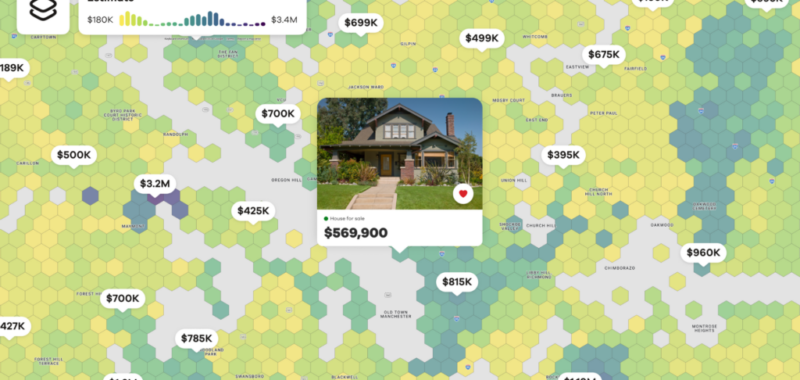Realtor.com released its new map-based search experience on Tuesday, which uses color-coded map layers to help homebuyers find their next home based on preferred home features and market trends.
Whether it’s refining your business model, mastering new technologies, or discovering strategies to capitalize on the next market surge, Inman Connect New York will prepare you to take bold steps forward. The Next Chapter is about to begin. Be part of it. Join us and thousands of real estate leaders Jan. 22-24, 2025.
Realtor.com has upgraded its map-based home search function with dynamic map layers, a tool that enables buyers to visualize key market data in their desired neighborhoods. There are 11 map layers for buyers to explore, including home estimates, lot size and slope, home size and age, market hotness, sold vs. list prices, average days on market and neighborhood boundaries.
TAKE THE INMAN INTEL INDEX SURVEY FOR SEPTEMBER

Mausam Bhatt | Credit: LinkedIn
“Do you remember when you bought your first smartphone and how it completely changed how you use a phone? Dynamic map layers are going to change how people search for homes online,” Realtor.com Chief Product and Technology Officer Mausam Bhatt said in a written statement. “They are an entirely new pathway to home discovery that allows buyers to answer their most pressing questions with a look at a map.”
Available on desktop and mobile devices, homebuyers can access dynamic map layers by changing their home search view from list to map. After toggling the map, they can click the layer icon to see all of the data visualization options, which are color-coded from bright yellow to dark purple. The colors adjust as homebuyers zoom in or out on specific neighborhoods, giving buyers a bird’s eye view of the listings and market trends in their area.
“[The maps] present data in an interactive way that is easy to use, easy to understand, and easy to make the most informed decisions with – so users can confidently choose the place they call home,” Bhatt added.

Realtor.com’s old map search vs dynamic map layers | Credit: Realtor.com
In a phone call with Inman, Bhatt said the dynamic map layers will save buyers precious time while searching for their perfect home. Instead of manually sorting listings based on filters and keywords, they can simply toggle layers to easily get answers to their most pressing questions.
“I live in the Silicon Valley Bay Area, and it’s a pretty wide geographic area,” he said. “There are many cities and towns that make up the Bay Area and homebuyers are looking for many different things, like a turn-of-the-century Victorian home, newer construction or an area that might not be as earthquake-prone.”
“Being able to answer those questions traditionally meant you had to spend hours and hours like going through one property at a time, looking at all the data, and then creating this mental map or a list,” he said. “With this initiative, it’s been about how do we cut down what historically has been very tedious to something that is very visual and you can get key information at a glance.”
Bhatt said his team is already thinking of ways to expand the map’s capabilities, including climate risk and predictive market trend layers.
“We’re working on layers to help people think through their decision, like how will home prices evolve over the next kind of 10, 20 or 30 years,” he said. “When they’re making perhaps one of the most important financial decisions of their lives, they’ll want to have some insight into that.”
“And then similarly, we’ve also been on the forefront of adding a lot of environmental risk factors and trends data,” he added. “So we’re going to add layers [about that] to our dynamic map layer technology.”

Realtor.com’s dynamic map layer for lot size | Credit: Realtor.com
Lastly, Bhatt said artificial intelligence will be key to future iterations of dynamic map layers and crafting a personalized experience for every visitor on Realtor.com’s desktop and mobile sites.
“I see AI as the foundational underpinning for personalizing the maps experience as well,” he said. “Let’s say, for example, a buyer comes in and engages with some layers or some parts of the neighborhood more than others, we want to use machine learning and AI to personalize the maps experience.”
“I mean, today, for most people, maps are fairly generic. It’s one size kind of fits all, but how people interact with maps and what’s important to them is also important and very different, and I think that that’s an opportunity for us to innovate,” he added. “It’s like going from black and white TV to color. That’s the experience we want to create for consumers.”
Email Marian McPherson

